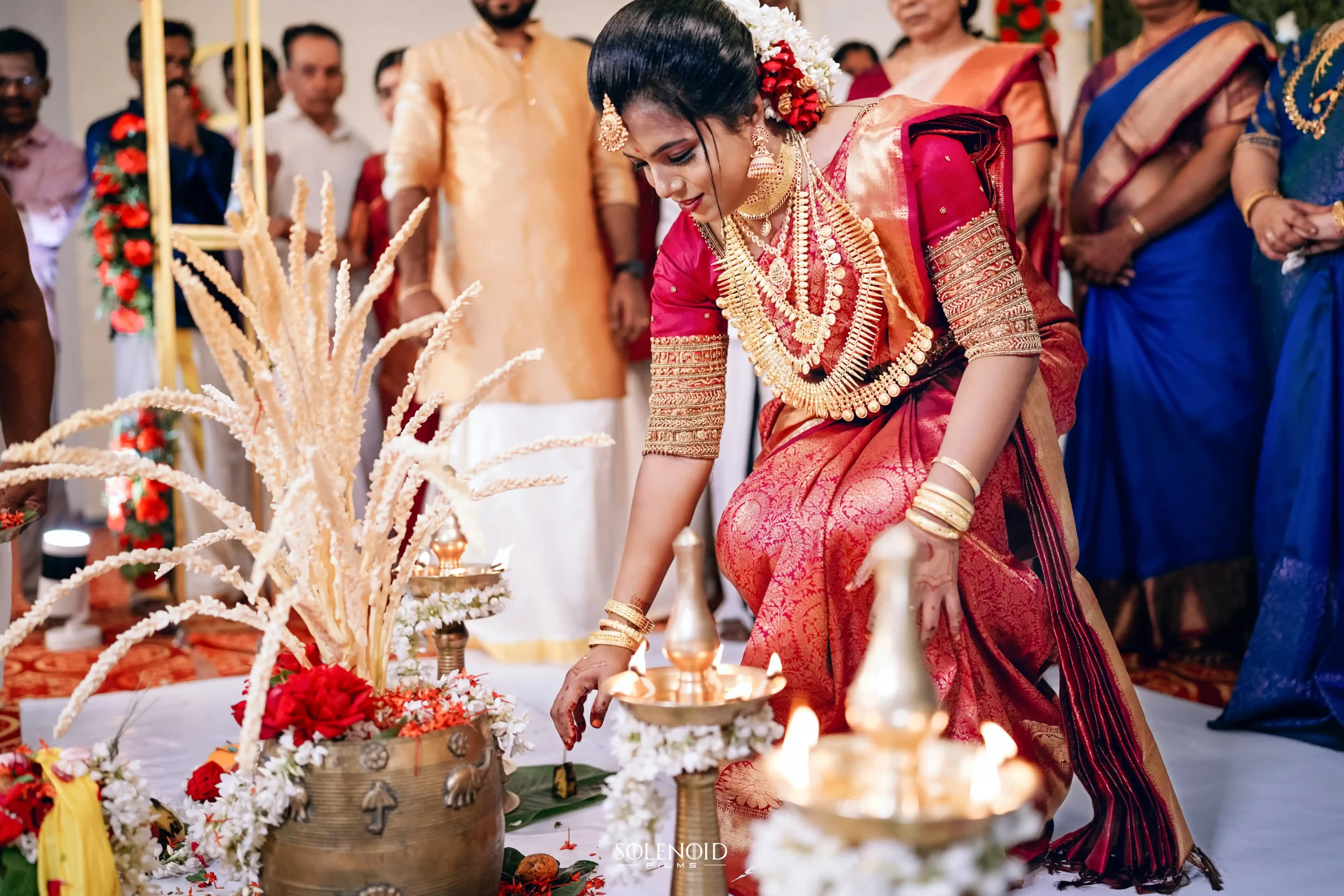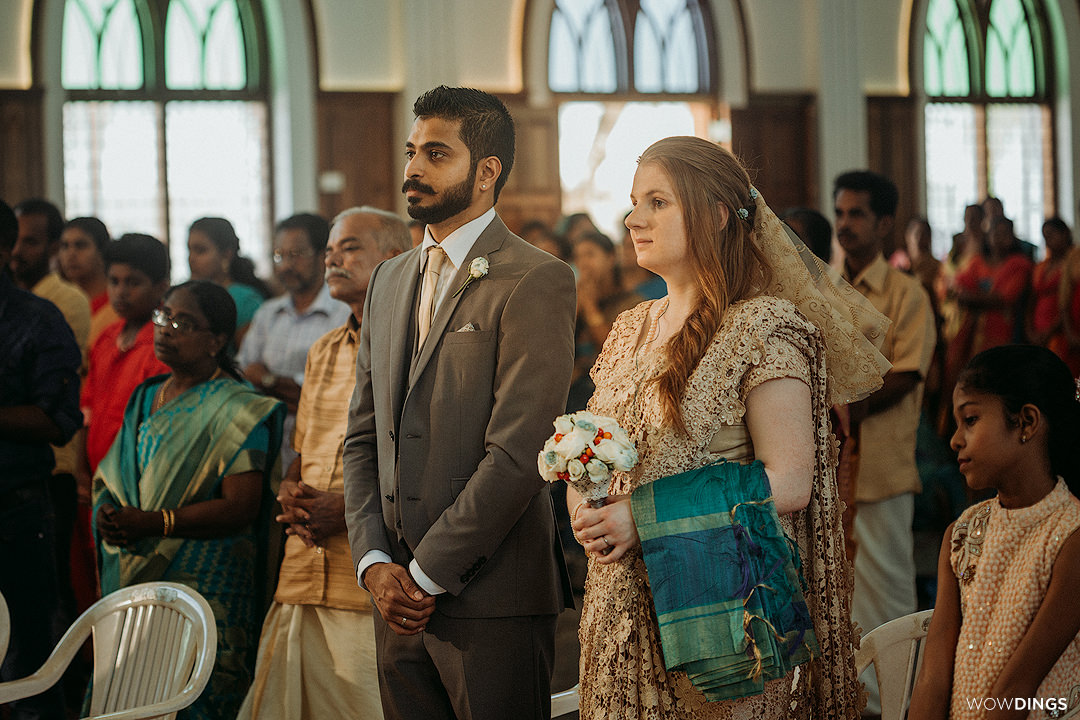
What are the prospects for marriage today? It is getting louder, at least in Kerala…even though often short-lived. The age at marriage of the boys and girls is also stretching farther and farther. Sreelatha Menon writes on the changing wedding culture of Kerala, once considered to be a state where people didn't believe in showing off.
Sreelatha Menon
In the late 80s, I was 22 when I got married. The marriage took five minutes, and the expense may have been less than two lakhs, but a big chunk of my parents’ old age funds. The price of a gram of gold then was about 3100 for ten grams while it is about 70,000.
Today Kerala weddings are heavily influenced by the celebration-heavy marriages of northern India and are also tailored to suit Instagram and YouTube reels. Today there are engagement functions, mehndi, haldi and sangeet ceremonies, the marriage itself, and a reception event.
Ostentation was the last thing that Kerala weddings could be associated with a few decades ago. Reshma, who just completed her medical degree course in Thiruvananthapuram, says that all marriages are customised to suit Instagram reels. Fresh after attending a “bridal shower” of her classmate she says that it is a pre-wedding event necessitated by the need to cope with Instagram demands! The boys have a bachelorette.
The marriage is divided into many photo/reel events beginning with pennu kanal reels, (boy’s family visiting the girl) followed by an engagement, a bridal shower, a save the date event followed by mehndi, sangeet, haldi, the marriage, and reception. Muslim weddings replace some of these with their innovative events like `Chameli’ and rangoli which make sense only to the reel generation. People choose whatever they want to highlight.
There is no dearth of event managers photographers or makeup artists. These are available on Instagram itself. Marriages do not need invitation cards anymore as e-invitations are the trend. ``Save the event ‘’ which doesn’t involve guests but close friends and the couple is still an expensive affair and has to be carefully and aesthetically shot. It tells the couple’s story and is shared a day before the marriage with all invitees and on Instagram or you tube handles of the families.
 Kerala Hindu bride
Kerala Hindu bride
These are also projected on the wedding day on screens, says Reshma. The more the events the more the dresses and jewellery, she says.
To cut a long story short, marriages are today more a series of carefully choreographed instagram events rather than a private and personal affair. The popularity of cinema may have influenced society to turn life itself into cinema. But Reshma says that while many go for such events, others choose the other extreme of just getting their marriage registered rather than celebrating and hyped up.
The bright side of this makeover of marriage is that the Kerala obsession with gold seems to be wearing off. At least gold is not as visible as it used to be till two decades ago.
While there were no mehndi or engagement parties in the 80s, that was the time when Kerala became obsessed with showing off gold at weddings. When my mother and her sisters got married in the 60s, gold was not flaunted. Marriages were usually between families known to each other, or between relatives. The girl did not have to wear lots of gold. They were dressed in a simple sari or a simple hand-woven mundu. They may wear four or five gold bangles, a necklace, and a chain.
But in the 80s and 90s, brides started getting submerged under the weight of gold. Gradually the new add-on ceremonies from other states began to add to the wedding bill. Some family suicides were reported and linked to rising expenses and the pressure to meet social expectations.
In 2015, the Kerala Commission for Women brought out an order asking for legislation to cut down on marriage expenses. It wanted a ceiling of Rs 5 lakh on marriage expenses. Jewellery could not be more than 80 gm. The guest list was to be limited to 200. The State Government looked the other way, till Covid struck and forced the Government to clamp down on wedding extravaganzas.
Reshma, a representative of the digital generation of Instagram and WhatsApp, whose lives are measured out in reels and stories, says that young people avoid too much of traditional jewellery, especially the 22-carat yellow variety. They are going for the antique look with more oxidized gold, she says.
A lot of artificial jewelry to match the dresses is also replacing gold as the focus is on the appearance alone, she says.
Age at marriage is rising
The age of marriage is also going up. My mother and her siblings were all married between 14 and 19 years. I was married at 22. I was a mother at 25. Boys usually were married by the time they were 26 or 27 by which time they would have been employed.
The generation to which my children belong is not in a hurry to get married.
 A couple getting married in a Kerala Church
A couple getting married in a Kerala Church
People in my eldest child’s generation are in their 30s and many of them are still single. Some live with their partners (unthinkable in my youth) and are accepted without any stigma by their parents. Some are even considering adoption and babies through IVF if marriage doesn’t happen in their 30s. So single motherhood is no longer a taboo as it used to be in their mother’s youth.
In the US, 50 percent of single mothers are unmarried. And considering the influence of Western culture through Hollywood, TV sitcoms, and dramas, the Netflix generations are taking in influences from across the world as Indians have never before done.
The generation born in the 2000s thrives on making new relationships, dating, and looking beyond relationships.
Many among them are trying to figure out their sexual orientation, their religion, and gods, and are not ready to accept anything they are not comfortable with. Their minds are open and unrestricted by influences from their native culture.
Dating: Till the late 90s, marriages were conducted first through brokers and then through online marriage bureaus. Today online dating sites like Tinder, Hinge, Bumble have taken over. People are also meeting over online platforms like Discord or WhatsApp.
Dating was uncommon in the 80s or even 90s. If all a girl and boy were seen together it was controversial.
Today young people follow their instinct or are under peer pressure to have a relationship in school or college.
Reshma says in her MBBS batch of 150 students, about 20 students got married as soon as the course was over. Of these about 8 were arranged marriages. The rest were love marriages. Of these three were inter-caste and one was interred religious, she says.
Many relationships formed on campus are short-lived and one of the trending compound words in present times is break-up. It’s painful for the victims but it is a part of their reality. While their parents may have suffered a single divorce, the children would have ended multiple relationships by the time they were even 20 years old. These often traumatic experiences either leave them wise and mellow or reduced to emotional wrecks.
If you are baffled by these rapid changes in values, remember the saying of a Zen master: You never step into the same river twice…. Just as water flows all the time, nothing remains constant about life too; why should family or any values remain static?
(Part 3: Sex : The Forbidden Word)
